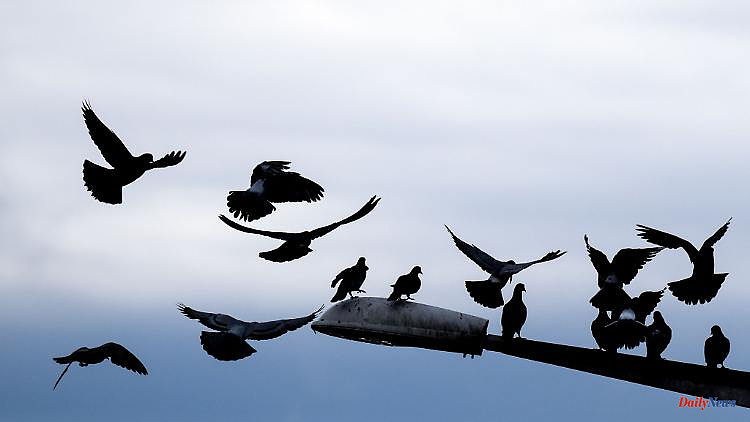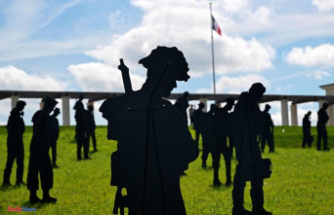Eagle owls die there, as do storks and many thousands of other birds: year after year, birds suffer electrocution on high-voltage lines and pylons. There is a security technique, but it is not usable. Conservationists and network operators want to change that.
Renningen (dpa / lsw) - In order to prevent birds from dying on power lines, the masts must be better secured against earth and short circuits from the point of view of nature conservationists. The nature conservation association Nabu, which assumes that at least 1.5 million birds are killed each year in a study, considers the previous protective devices on thousands of kilometers of medium-voltage lines to be inadequate. Above all, large birds such as storks, birds of prey and owls use the masts of the overhead lines to sit, sleep or as breeding grounds. "In doing so, however, they run the risk of bridging the insulators of the lines or short-circuiting the lines," said Baden-Württemberg Nabu state chairman Johannes Enssle.
Although network operators have already taken protective measures, these are often not sufficient. In order to further reduce the risk and to better protect birds throughout Baden-Württemberg, the State Ministry for the Environment, Nabu, the Association for Energy and Water Management (VfEW) and several network operators have joined forces. Their goal: In three phases, especially dangerous mast types are to be retrofitted. They signed a corresponding agreement on Thursday in Renningen (Boeblingen district) - befitting an already retrofitted electricity pylon.
According to the study commissioned by Nabu with data from bird protection associations, white storks and common buzzards die most frequently from electric shocks in Germany - although the defusing of dangerous pylons is prescribed. Eastern European imperial eagles and saker falcons are even threatened by unsecured power poles, it said when the study was published at the end of June. According to the Nabu, collisions with power lines killed a particularly large number of swans and other waterfowl and large birds.
However, the number of birds killed by electricity is difficult to estimate. The number of unreported cases is enormous, said Nabu country chief Enssle. "Most victims of electrocution fall off the pole and, if not already electrocuted, are seriously or fatally injured by the fall." After the crash, a large proportion of the carcasses were also quickly carried away by predators such as foxes and martens. "Only very few victims stay directly at the scene of the accident or get stuck on the mast," said Enssle. Estimates from other organizations are not available.
The Federal Nature Conservation Act already stipulates that masts for medium-voltage lines must be retrofitted. However, no deadline is specified, and previous upgrades have proven to be useless for many electricity pylons.
With the new Baden-Württemberg agreement, however, only around 70 percent of the network with its more than 60,000 kilometers of medium-voltage lines is covered by the operators involved. According to the Ministry of the Environment, 13,750 kilometers of these lines are so-called overhead lines. The remaining 80 percent of the medium-voltage line network is laid underground as cables.
Baden-Württemberg's Secretary of State for the Environment, Andre Baumann, wants to persuade other companies: "Now it's time to continue campaigning for other network operators to join our joint project and ensure more bird protection on medium-voltage lines," he said in Renningen.
However, better protection against electrocution is likely to take a long time: In the first of the three phases, a period of five years is specified in order to first inspect particularly problematic pylons and make them safer with special covers, for example. Bird protection markings on the lines can also make them visible to the animals. This could prevent a large part of the particularly numerous collisions, as the Nabu announced.
VfEW President Klaus Saiger asked for understanding of the timetable: "We are planning a gradual upgrade because we are limited in terms of personnel and material availability - as in other areas - and we also have to consider agricultural issues," he said. Many masts stand on agricultural land.
The Netherlands, Luxembourg and Sweden are among the pioneers in bird protection. Underground cables are used there. "That's definitely the best solution," says Nabu country boss Enssle. "It's expensive, but it's the trend, especially for new buildings."












